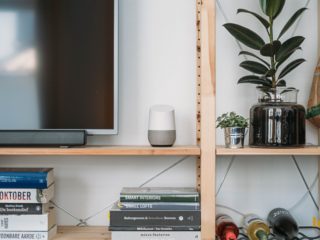Using new technology to attract and retain more supporters
It’s tough for charities to get their message out to the maximum amount of people. With numerous online donation platforms, social noise, celebrity patrons and different platforms to vie with for attention, it’s not getting quieter out there
Adding to this mix is the (relatively) newer channel of conversational AI, and in particular, voice. There’s been a big leap forward over the last few years in both adoption of voice assistants, devices and channels — Alexa Google Assistant, Bixby — and how much voice platforms actually understand the questions they are being asked, and their ability to return useful information
So, charities should go all in, develop their own voice interactions and channels and reach voice nirvana (frictionless donations, millions of interactions from users on voice) immediately?
Whoa, Nelly. Not so fast.
Let’s take a look at some practical examples of charities and their voice strategies and applications — what they are doing, which channels they are launching on, and common themes and patterns.
This is part two of our series on emerging technologies and the charity sector, where we take a look at the landscape, see where emerging technologies such as conversational AI are being used — and make some strategic suggestions as to how charities could apply this thinking to their own projects. (if you’d like to chat about how we could help you do this, get in touch.
Charity Electricity Safety First has launched a voice assistant skill (a voice app) on Alexa. The aim is to increase awareness of electrical devices — such as fridges and washing machines — in the home that may be unsafe.

It does this through a simple voice interface where the latest information on product recalls can be accessed to check whether a product should be replaced or fixed.
Users of the skill can say a brand name and then find out if there are any products from that company that have a recall status. This is important when under 20% of products that have a recall are actually returned to the manufacturer or retailer.
This is also made harder because a low number of people actually register their devices in the first place — I’m guilty of that for one 🙁
Users can also play a game in the skill ‘How can it kill me’ (great name btw) and find out about which travel adaptors to use when heading abroad. Currently, the skill is available for UK and US language variants.

What we’d do next.
It’s a great initiative and simple to use the skill — it’s also potentially life-saving :). Here are a few thoughts on how this (and other charities) could build on this in other areas, get more people to use their initiatives by leveraging brand reach – and how it could be found and help more people keep safe.
- Partnering with the manufacturer brands to include this in safety documentation would be useful. Say Indesit, could include in product leaflets using the same technology but specific to the brand. This would also have the benefit of using their channels to aid discovery for skills, bots or other elements.
- In further versions adding an AR/QR component to make it visually useful (i.e. hold the phone in front of the appliance and get direct information about the model, and any recalls — is also a good way for the brands themselves to use the positive interaction and get people to register devices more easily.
- Make it more accessible for those whose voice isn’t the right channel (for instance, those with speech/hearing challenges, perhaps anyone who may be concerned about security/privacy and voice.
- As it’s a voice channel, be good to see it work in multi-modal — using a framework approach could help to push it out quite easily to multiple channels — webchat, FB, WhatsApp, SMS as well as connecting to CRM and Live agent for the brands themselves.
- Gamifying is a good idea, connecting that to points, possibly discounts on products (or insurance?) i.e. the Vitality/Apple health promotion where checking appliances in your home environment are safe = discount or rewards on home insurance
There are lots of applications for this across sectors — we’re working on some conversational AI initiatives in chat and voice within Fire safety and Food areas — and it would also be useful for utilities (water gas etc) and in particular in products aimed at children (safety recalls etc).
It also can work well in the assistive technology area — helping people live independently in their home environment, an area we’ve done quite a lot of work in, with IoT and emerging technologies
If you work for a Charity, drop us a line at hello@thesynthetic.co we have a range of cost-effective initiatives to help you win — we also run roundtables, specifically for charities looking to power their engagement and fundraising with AI.
We partner with a range of forward-thinking businesses — from global healthcare corporates and enterprise technology giants to innovative charities and edu-tech startups, on conversational AI initiatives — chatbots, voice UI, digital assistants, and emerging tech.
Get expert campaign planning, customer experience mapping, conversation and voice design and build and optimisation for your voice and chatbot initiatives.
Conversations worth millions




